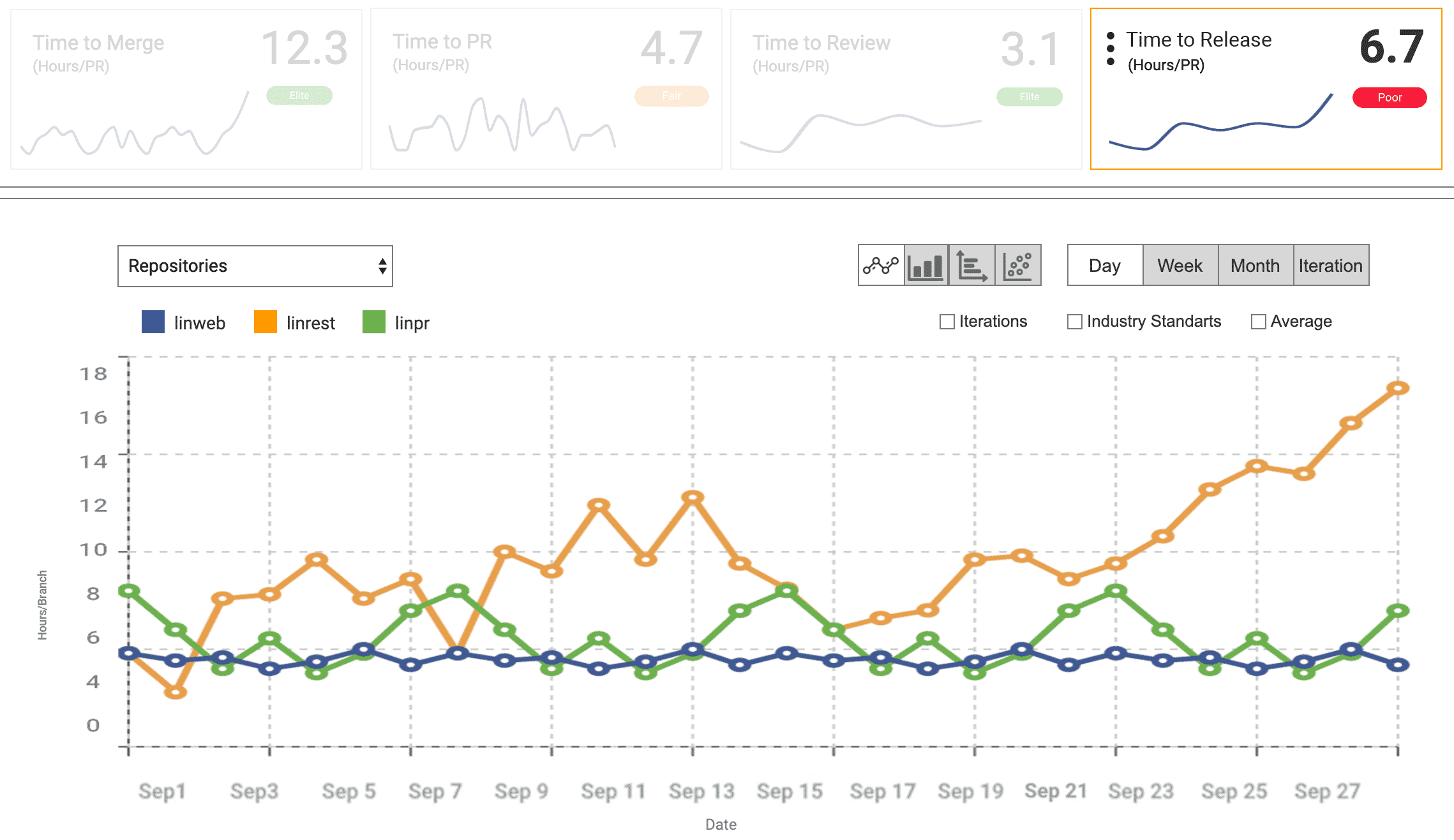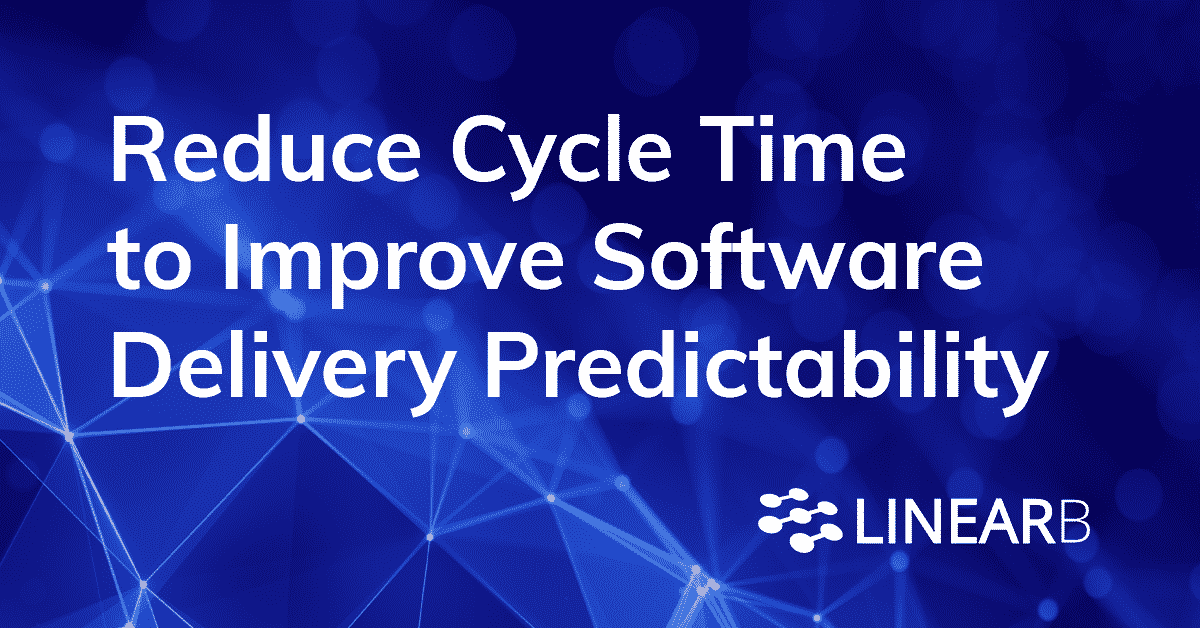What Is Cycle Time?
Cycle time measures the amount of time from work started to work delivered. It is a metric borrowed from lean manufacturing, and it is one of the most important metrics for software development teams. In plain speak, cycle time measures the amount of time from first commit to production release.

Why Is It Important?
Shorter cycle times indicate an optimized process, and faster time to market. Shorter cycle times for software teams lead to increased revenue, high customer renewal rates, and a happy efficient development organization.
Longer cycle times indicate inefficiencies in the process and slower time to market. Longer cycle times for software teams lead to delivery delays for customers, lost prospects, and an unhappy inefficient development organization.
How To Measure It?
Some engineering leaders try to measure cycle time using Jira or other project management tools. This method is manual and time-consuming and it relies on good data hygiene. Most leaders, however, lack visibility and understanding of their team’s cycle time.
LinearB instantly measures cycle time for your organization, and each development team with real-time reporting, trending, and bottleneck detection. If you’re ready to see your cycle time and other key metrics, start your LinearB trial!
How To Improve Cycle Time
1. Visibility with Bottleneck Detection:
In order to improve your team’s cycle time, you have to not only have visibility into what your cycle is but to also expose the bottlenecks within the process. In addition to cycle time, LinearB provides metric breakdowns for “first commit to merge”, “time to merge”, “PR Open to Merge”, and “Merge to release”. This allows you to identify and focus on the bottleneck.

2. Performance Introspection and Testing
With the bottleneck in your organization’s process identified, you need to investigate the cause of the issue. Rarely are all teams or repositories performing equally. LinearB gives software engineering leaders visibility into performance by team, by repository, and by time. Drill down on performance to uncover issues and see where they can make a positive impact.

3. Resolve Bottlenecks Proactively
While visualizing your cycle time will help you identify bottlenecks, you need to be more proactive to resolve them.
LinearB has the ability to detect high-risk work in branches prior to PR initiation. Early detection of high-risk work allows teams to be proactive in minimizing risk early in the development lifecycle.

LinearB notifies users of long-living PRs waiting for review. Long living PRs and PRs waiting for review cause Cycle Times to increase. Alerting on these situations help teams reduce time from PR to Merge.







